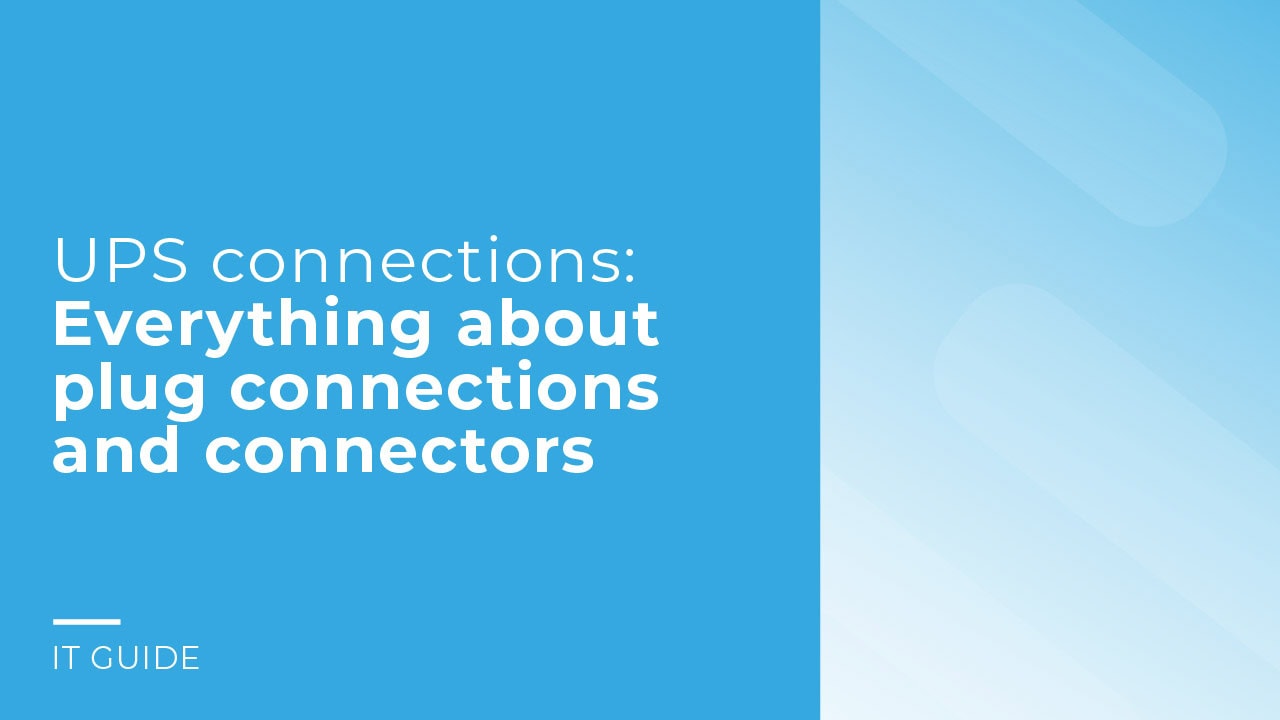
Unexpected power failures can cause major damage. UPS systems (uninterruptible power supply), which protect your electronic devices from sudden power failures, can help to prevent this. To increase the performance of your UPS system, you need special types of connection to ensure a reliable power supply.
Difficulties arise when the plug of the UPS does not fit into your wall socket. Problems can also occur if the plugs of your devices are not compatible with the UPS connections. To avoid such complications and choose the right connections, we will introduce you to the various plug connections, plug types and connections in this blog post.
The importance of UPS for device protection
UPS systems are crucial for protecting electronic devices by stabilizing the power supply and preventing power failures. They ensure the continuity of IT infrastructures and are available in various designs. Please contact us using the inquiry form for a quote.
Function and areas of application of UPS devices
UPS systems provide a reliable power supply through battery operation in the event of a power failure. They protect against data loss and voltage fluctuations. UPS devices are indispensable for companies and critical facilities such as hospitals and data centers. Find out more about the effects of power outages and surges on IT security in our blog post “Power failure and overvoltage in IT hardware: what are the consequences for IT security?”.
Different UPS classes and their functions
UPS systems are divided into 3 classes (online, offline, line-interactive) in order to meet individual requirements. Find out more in our ups guide “UPS guide: How to find the right UPS system for your requirements” to find out which UPS class is suitable for your needs.
Electrical connectors consist of a male part with contact pins and a female part with contact openings. The male part can be a plug, which is located at the end of a cable, or a built-in plug, which is permanently integrated into a device housing. The female part, on the other hand, is either a coupling at the end of a cable or a socket that is permanently installed in a device housing. Plugs and couplings are therefore used to connect devices and extend cables.
Connection options include IEC plug connections, NEMA connections or socket strips. There are also combined solutions, which allow more variability, for example socket strips with Schuko sockets and IEC sockets. Due to the many plugs and sockets available, we offer you an overview of the various plug connections below.
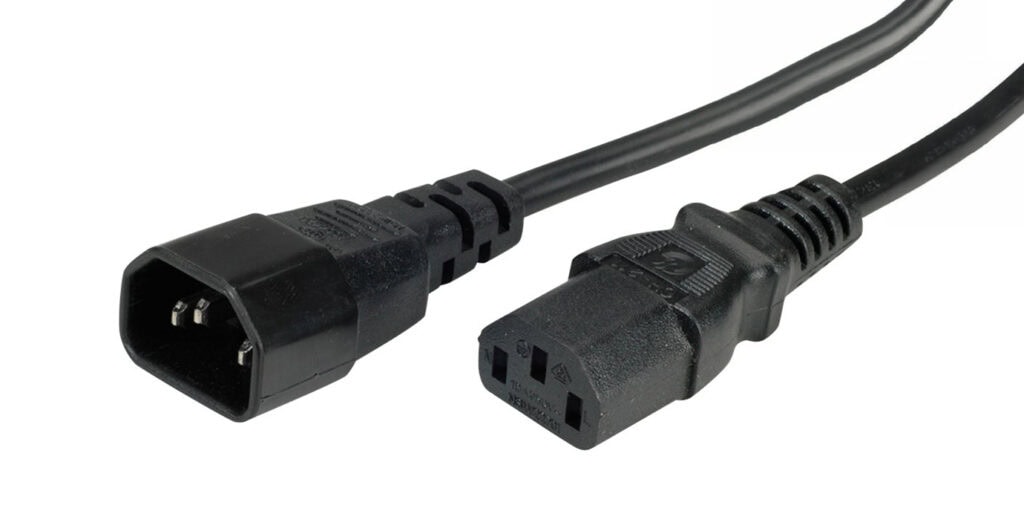
These connections are most commonly found in office applications, data centers and IT infrastructures. They are mainly used for smaller servers and peripheral devices such as computers, monitors or compact UPS systems. The C13 plug is plugged into a C14 socket and can support up to 10 amps at 250 volts.
Advantages and disadvantages:
+ Standardized (IEC 60320)
+ Widely used in electrical appliances and UPS systems
+ Safety interlock
– Require adapters for regions without IEC standard
– Limited load capacity
– High space requirement
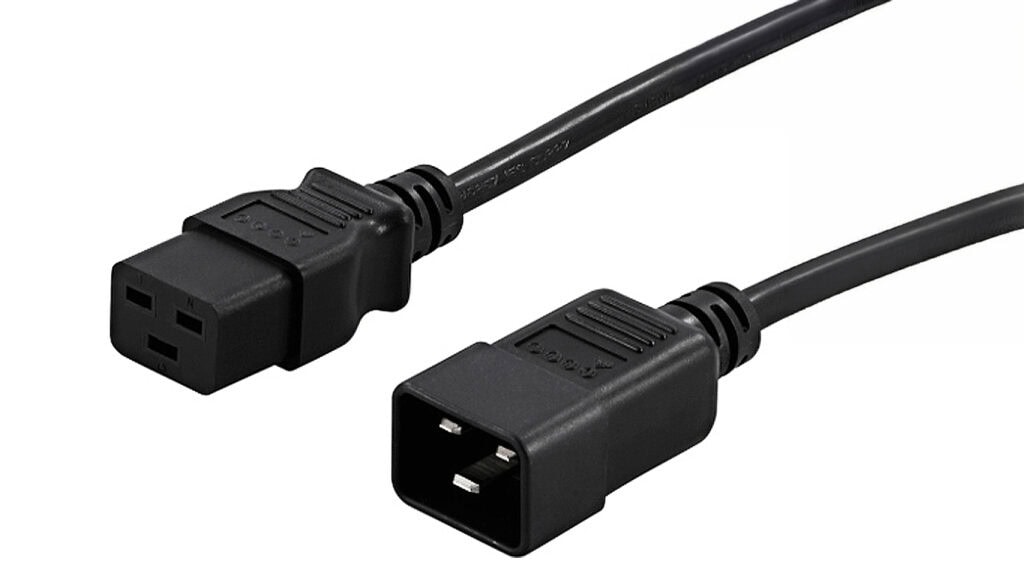
These connections are specially designed for devices with higher power requirements. They are often used for high-performance servers and network equipment as they can support higher current loads. These connections are often found in servers, network switching devices and larger UPS systems. Here, the C19 plug is plugged into a C20 socket and can support up to 16 amps at 250 volts.
Advantages and disadvantages:
+ Standardized (IEC 60320)
+ High reliability
+ Integrated in many devices
– Requires adapters for regions without IEC standard
– Little flexibility
Suggestion: The C39 output of Eaton Rack PDU G4 is also a game changer, maximizing flexibility and ease of use by combining C13 (10A) and C19 (16A) on a single output. We also offer PDUs from Eaton in our online store.
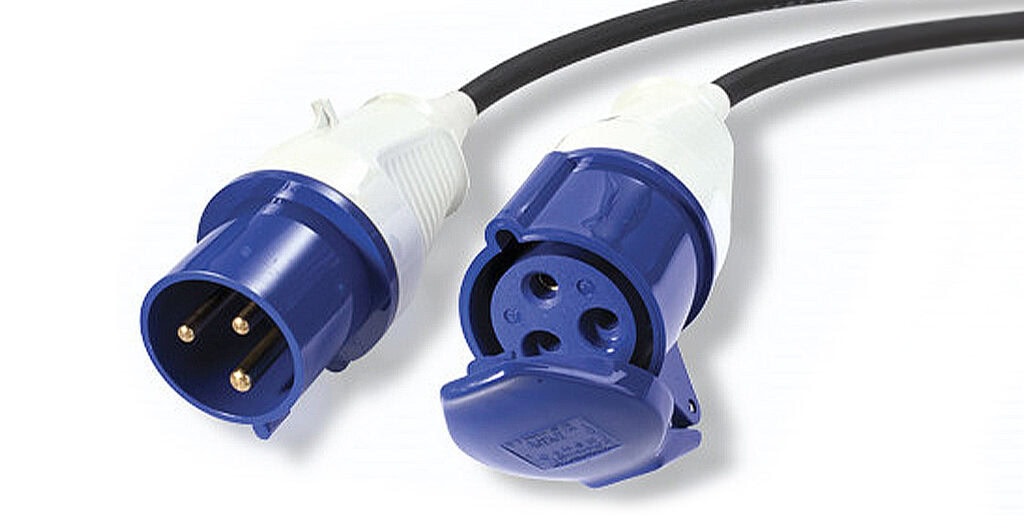
The IEC-309, 16A connector is a robust choice for connecting UPS systems. With a current rating of up to 16 amps, they are ideal for small and medium-sized applications. These connections are particularly common in data centers, server rooms and industrial environments.
Advantages and disadvantages:
+ Compactness and manageability
+ Simple installation
+ High reliability and durability
+ Less expensive than 32A version
– Limited power capacity (only for up to 16 amps)
– Not suitable for large data centers with high power requirements
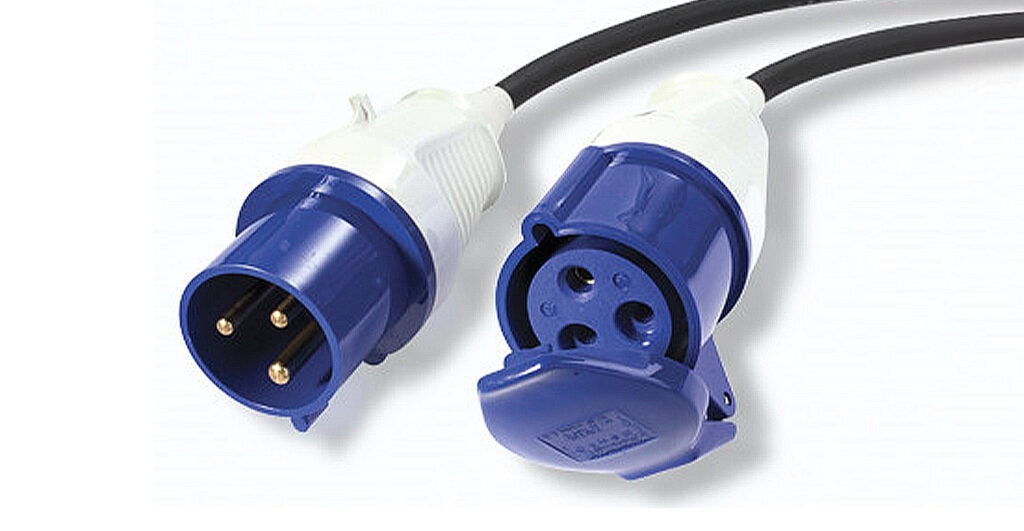
The IEC-309, 32A connector is suitable for applications with higher energy requirements and offers a higher current capacity. With a design for up to 32 amps, they are primarily used in larger data centers and industrial systems.
Advantages and disadvantages:
+ Higher current capacity (up to 32 amps)
+ Reliable power supply
+ Versatile application possibilities
– Difficult installation due to bulkiness
– More expensive than 16A version
– Not suitable for smaller applications (too powerful)
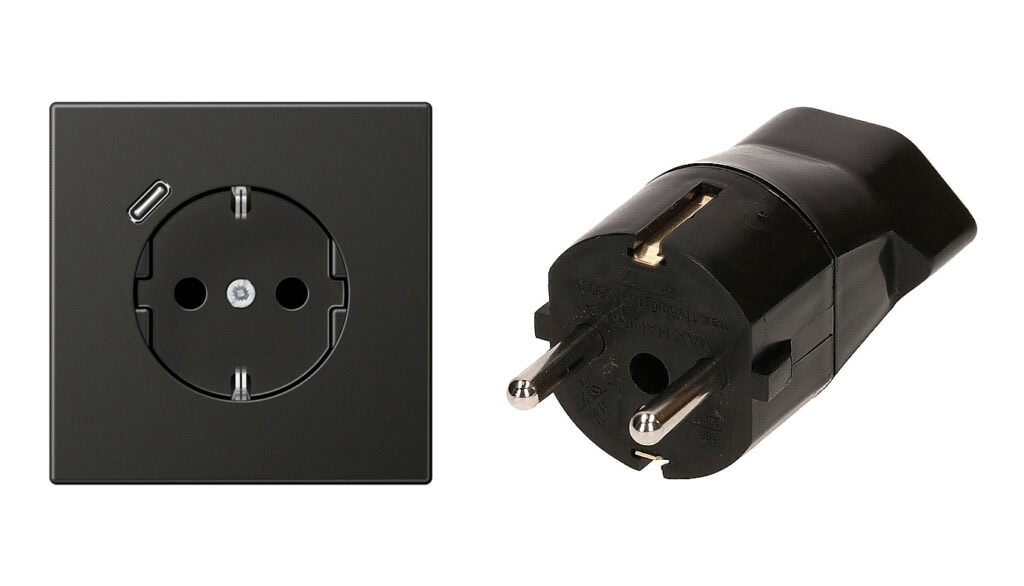
SCHUKO plugs are a common standard for electrical plug connections in Europe, especially in Germany and Austria. They are characterized by their earthing contact and high level of safety. These plugs are designed for currents of up to 16 amps and voltages of 230 volts and are used in private households, offices and industrial environments.
Advantages and disadvantages of Schuko plugs:
+ Robust construction
+ Easy to use
+ Integrated in many household and office appliances
– Not standardized outside Europe
– Requires adapters for international use
NEMA 5-15
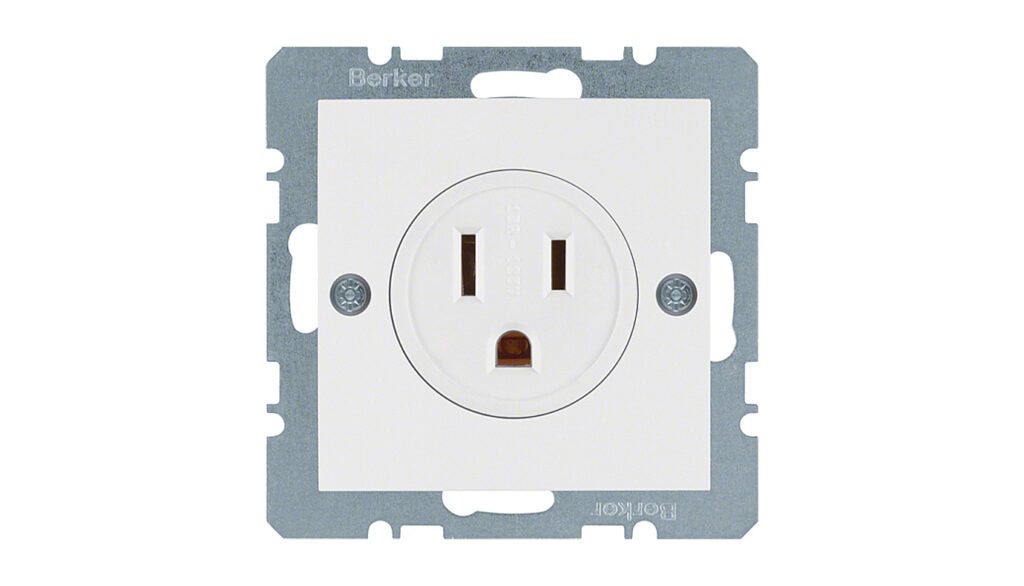
The NEMA 5-15 connection is one of a series of power connections designated by the National Electrical Manufacturers Association. It is the most commonly used connection type in the Americas, particularly in the United States, Canada and Mexico, as well as in parts of Asia. These connections are standard in homes and offices and support a current rating of 15 amps at 125 volts.
NEMA 5-20
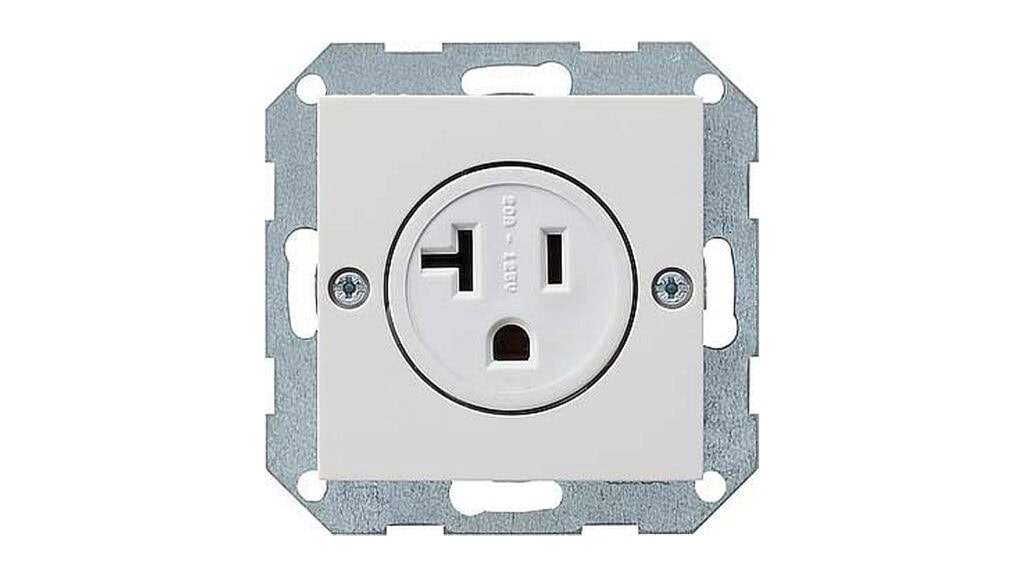
The NEMA 5-20 connection is designed for applications with higher current requirements and, like the NEMA 5-15 connection, is widely used in America. It enables a current of up to 20 amps at 125 volts and is used in more specialized environments.
Advantages and disadvantages of NEMA connections:
+ Robust construction
+ Simple procurement
+ Widely used in North America
– Regionally limited
– Requires adapters for international use
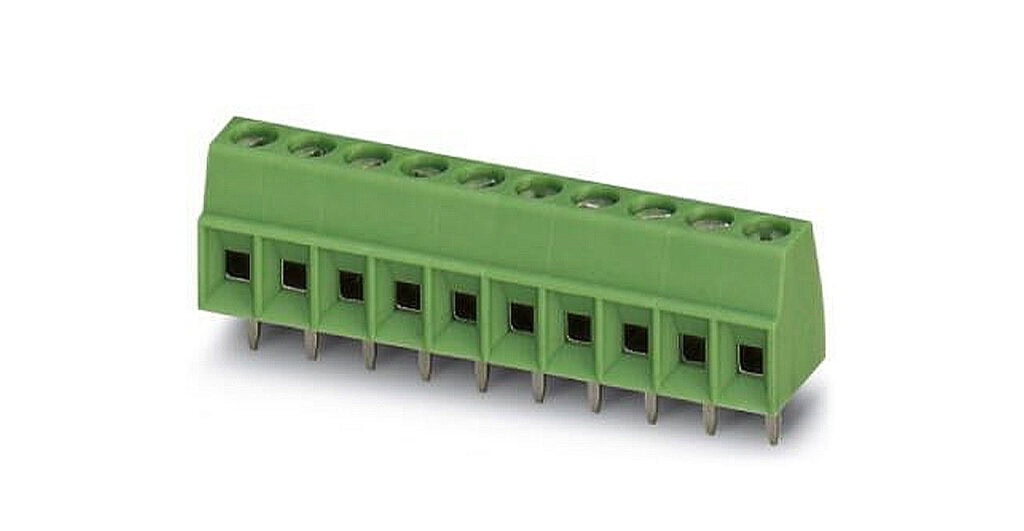
Terminal blocks, also known as terminal block connections, are often used in larger systems, particularly in industrial applications and large UPS systems. They are designed to handle very high currents and voltages and offer the flexibility to adapt to different cable sizes and types. Depending on the type and model, the current and voltage ratings can vary. In industrial applications, terminal block connectors are often designed for higher current ratings. Typically from a few amps up to several 100 amps at voltages from a few volts up to several 100 volts.
Advantages and disadvantages of terminal block connections:
+ High flexibility and adaptability
+ Suitable for customized installations
– Complex installation
– Less user-friendly than standard connectors
Preparation and planning for installation
Maintenance of the UPS connections
Common problems and their solutions
In this blog post, we have introduced you to the most important connector types and their specific applications. Each connection has its own advantages and disadvantages that need to be carefully weighed up depending on the application.
By choosing the right UPS connectors, you maximize the efficiency and reliability of your power supply, prevent outages and protect your valuable IT infrastructure from damage. Also pay attention to standards and certificates as well as other regional safety standards to ensure the safety of your connectors. Remember that thorough planning and regular maintenance are essential to ensure the long-term functionality and safety of your UPS system.